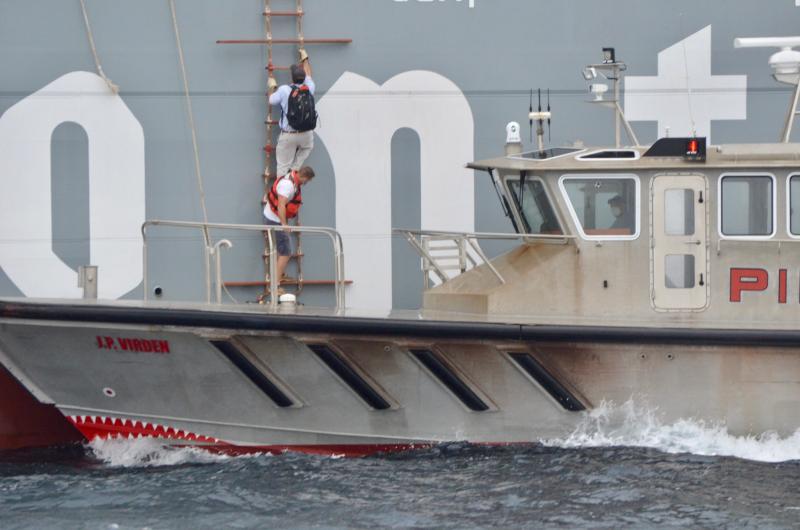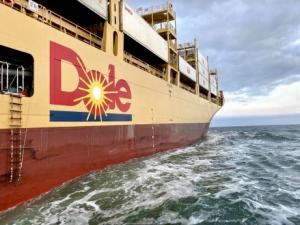Shipping issues through the eyes of a river pilot
Barely a day goes by without our hearing about shortages and shipping delays related to national and international delivery infrastructure. Containers filled with everything from Halloween and Christmas items to washers, dryers and refrigerators, are sitting in ports along both coasts of our nation.
They’re awaiting trucks and chassis fitted for hauling containers to haul them away. Contributing to the delays are the usual suspects we’ve become accustomed to in the last year-and-a-half: COVID-19, employee shortages, increasing demand as the pandemic releases its grip.
But if container terminals in Philadelphia are backing up, why aren’t we seeing more ships backing up and anchored off our coast or in the lower Delaware Bay anchorages?
David Cuff, president of the Pilots Association for Bay and River Delaware, this week helped me with an answer. Members of the association, headquartered in Philadelphia and Lewes, board inbound and outbound vessels to help their captains safely navigate the tight channels of Delaware River and Bay.
He said what it comes down to is that there aren’t necessarily more container ships coming in and out of Delaware Bay, but those coming in are more loaded than they have been in the past year-and-a-half. “We’re up in container volume by at least 10 percent,” said Cuff, “but where we were seeing ships with 2,000 containers coming in when the pandemic took hold, now we’re seeing ships with anywhere from 10,000 to 12,000 containers on them. They just hadn’t been full for the last couple of years.”
Cuff said his sense is that China’s shutdown during the pandemic, when the country was exporting far less due to restrictions, is a big part of the problem. “I think it’s part of the rebound. Now we’re trying to bring in two and three times as much cargo and the ports are running out of room.” He said they’re now seeing ships diverted to ports like Charleston, S.C., and in Florida where logistical problems aren’t as severe.
The problem hasn’t yet become as severe in Delaware Bay as in places like the ports of Los Angeles/Long Beach in California and Savannah, Ga., where ships are stacking up along both coasts waiting to be offloaded. “In Savannah they now have about 20 ships waiting to be offloaded. We have the potential for that to start happening here but it hasn’t so far.”
Cuff said shipping traffic in Delaware Bay and River is diversified with petroleum products coming and going, fruit coming in from Central and South America, as well as container-ship traffic. “But we certainly don’t have the container volume of places like Los Angeles/Long Beach and Savannah.” He said Delaware Bay shipping volume overall is definitely up from the COVID lows, but not yet back to 2018 and 2019 levels.
In Chesapeake Bay south of Maryland’s bay bridge, ships stack up in an anchorage off Annapolis. Cuff said his sense is that many of those are related to the coal trade.
Meanwhile, as efforts continue to clear up the container backlogs here and elsewhere, Cuff said the pilots work continuously with the local terminal operators, federal legislators and the U.S. Army Corps of Engineers to keep the shipping channel from Lewes to Philadelphia and above dredged to 45 feet. “We’re authorized for 45 feet and most of the dredging is complete but things are still settling. There’s always maintenance. Different shoaling forms here and there because of new contours after the dredging. We’re bringing vessels inbound at 42 feet but hopefully in another year we’ll be able to get up to that 45 mark. There’s light at the end of the tunnel, but we have to stay on top. Lots of hoops to jump through. We almost need a dredge year round. We have 110 miles of river to take care of.”
It’s all about infrastructure, and infrastructure doesn’t take care of itself.























































